curl xxx.txt, error Illegal characters found in URL
Use: %s/\r//g, remove \r
Use: set fileformat=unix to specify the file format
curl xxx.txt, error Illegal characters found in URL
Use: %s/\r//g, remove \r
Use: set fileformat=unix to specify the file format
Recently, a Kirin learning system was installed, and SSH was configured normally. It was found that remote learning was not possible
The Solution is to modify an SSH configuration file:
1. Update or install SSH
yum -y install openssh
2. Edit the configuration file, delete the last [Kex beginning] string of characters, and then copy this sentence in again
KexAlgorithms curve25519- [email protected] ,ecdh-sha2-nistp256,ecdh-sha2-nistp384,ecdh-sha2-nistp521,diffie-hellman-group14-sha1
vi /etc/ssh/sshd_config
End insert
KexAlgorithms curve25519- [email protected] ,ecdh-sha2-nistp256,ecdh-sha2-nistp384,ecdh-sha2-nistp521,diffie-hellman-group14-sha1
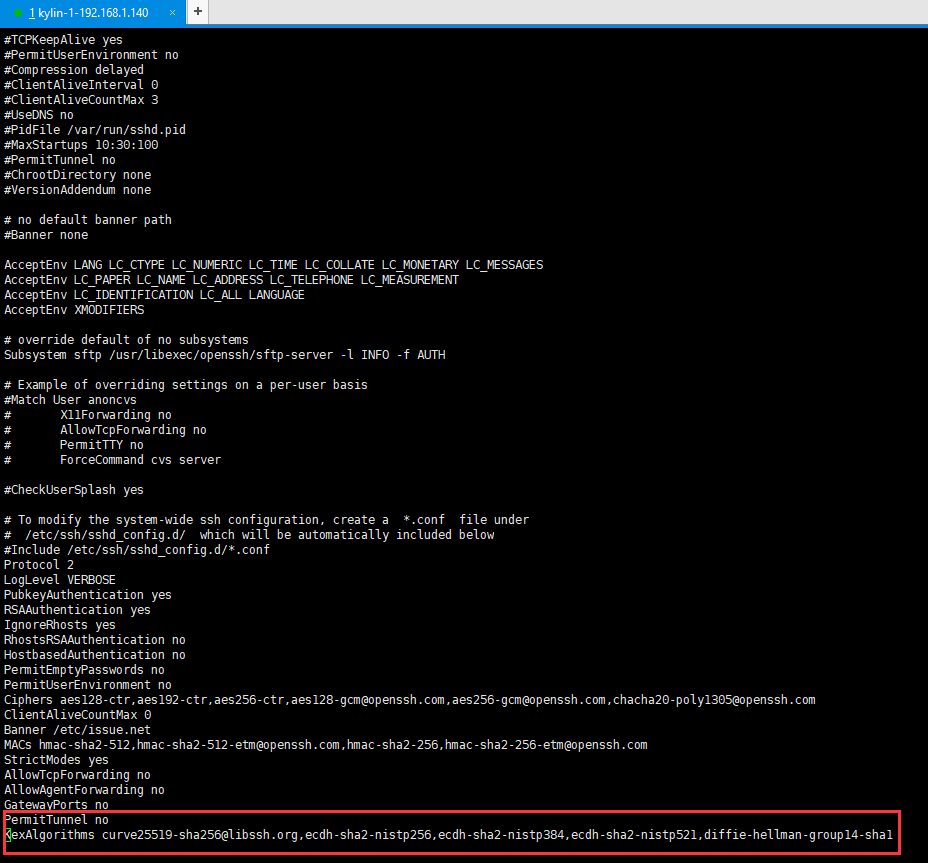
3. After saving, restart the service and connect again
systemctl restart sshd
The syntax on the shell is basically a glance and then used directly
What made me crazy at that time was the comparison of shells. I didn’t expect that there was a problem here
bash: [y: command not found…
After configuring environment variables
source .bashrc
Bash: [y: command not found…
Check the syntax. The main reason is that there is no ” between [] and the judgment logic in the middle. After adding a space, there is no problem

Solution: put the file that cannot be found into the root directory of the project
The reason is unclear.
But I found that one record in the log was abnormal, so I thought of putting the file in the root directory
2021-11-18 23:20:36,770 WARN [main] mapred.LocalDistributedCacheManager (LocalDistributedCacheManager.java:symlink(201)) - Failed to create symlink: \tmp\hadoop-wuhao\mapred\local\job_local1290197105_0001_a1814cc0-1378-4a60-bfef-7c0838160efe\orders <- D:\IntelliJ IDEA 2020.3.1\IdeaProjects\MapreduceDemo/orders
Supplement:
In order to support file replication, Hadoop provides a class distributedcache. The methods of using this class are as follows:
(1) The user uses the static method distributedcache. Addcachefile() to specify the file to be copied. Its parameter is the URI of the file (if it is a file on HDFS, it can be as follows: hdfs://namenode:9000/home/XXX/file Where 9000 is the namenode port number configured by yourself. Jobtracker will get the URI list before the job starts and copy the corresponding files to the local disk of each tasktracker.
(2) The user uses the distributedcache. Getlocalcachefiles() method to obtain the file directory, and uses the standard file read-write API to read the corresponding files.
Similar: [MapReduce] reports an error: java.io.filenotfoundexception: \ user \ Mr \ input \ information.txt (the system cannot find the specified path.)_ Riding the snail chase missiles ~-csdn blog
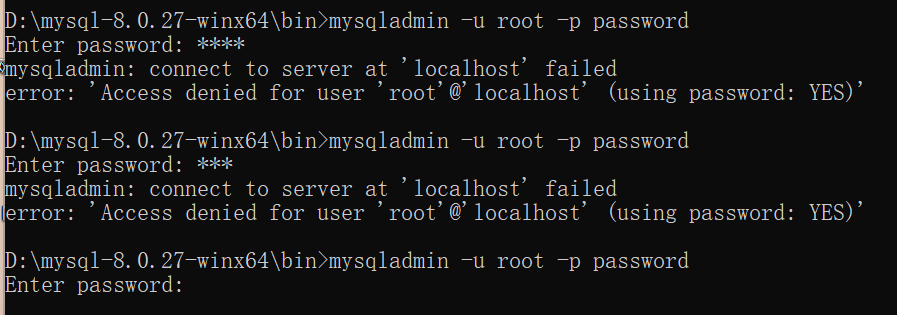
Error reporting reason:
Password input error. If you are prompted with using password: No, it means that you need to enter a password
Solution:
When enter password: appears, do not enter the password. Press Ctrl + C directly and you will be asked to enter a new password.
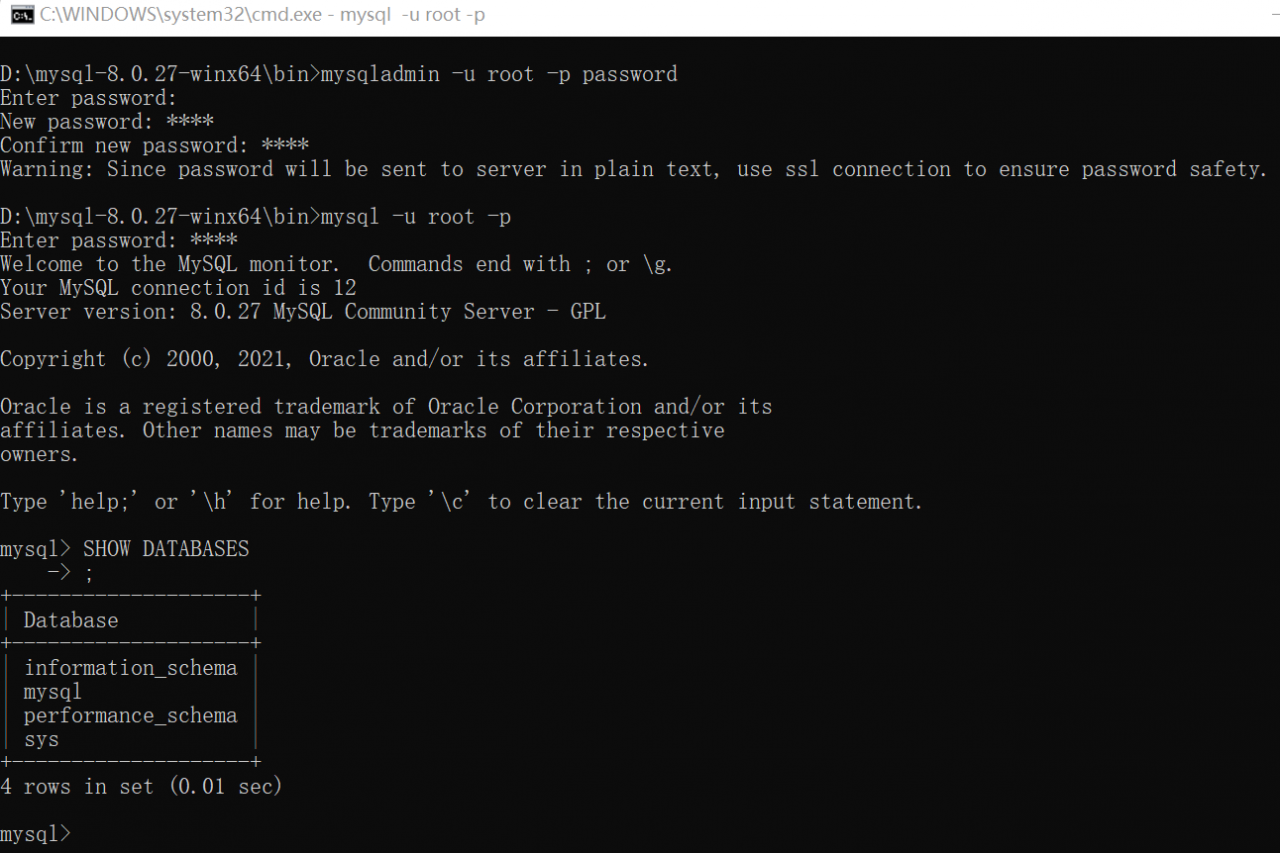
About soapUI call error: error reading xmlstreamreader:
Record the process of solving each small bug without taking steps:

Problem Description:
Today is the first time to use WebService, and it is also the first time to call WebService. When calling with soapUI, an error is generated
Error reading xmlstreamreader: unexpected character
If it is deleted in the front, an error will be reported, and the text value behind it will be displayed
An error is reported after deleting the text values in all tags:
Error reading XMLStreamReader: Unexpected EOF in prolog
Through online inquiry, some people said it was a format error. After careful inspection, they found that there was no format error, and the verification was successful through the software itself
Solution:
Later, it was found that the back-end authentication was not released, so it was released. Finally, the problem was solved.
Integration mode extraction process exception abend
Ggserr.log log log prompts are as follows
ERROR OGG-02028 Failed to attach to logmining server OGG$ABCD error 26927 - ORA-26927: altering an outbound server with a remote capture is not allowed
After querying MOS, it was found that the problem was a potential logminer error. There was a problem releasing PGA memory for the process, resulting in the process failure
Potential logminer bug.Problem when the PGA memory is being freed for the process resulting in the process failure.
The official gives three methods, and I use the second one here
Copyright (c) 2021, Oracle. All rights reserved. Oracle Confidential.
Click to add to Favorites IE abends with ERROR OGG-02028 Failed to attach to logmining server ORA-26927 (Doc ID 2127219.1) To BottomTo Bottom
In this Document
Symptoms
Changes
Cause
Solution
References
Applies to:
Oracle GoldenGate - Version 11.2.1.0.3 to 11.2.1.0.39 [Release 11.2]
Information in this document applies to any platform.
Symptoms
IE abends with ERROR OGG-02028 Failed to attach to logmining server OGG$ABCD error 26927 - ORA-26927: altering an outbound server with a remote capture is not allowed
Changes
None
Cause
Potential logminer bug.Problem when the PGA memory is being freed for the process resulting in the process failure.
Solution
-- Solution #1 --
Double the MAX_SGA_SIZE parameter for the affected Extract and restart.
This is to see if the abend is related to memory.
TRANLOGOPTIONS INTEGRATEDPARAMS (MAX_SGA_SIZE 512, parallelism 2)
-- Solution #2 --
Un-register and register the extract again
ggsci> UNREGISTER EXTRACT <ext_name> DATABASE
ggsci> REGISTER EXTRACT <ext_name> DATABASE
ggsci> start <ext_name>
-- Solution #3 --
Downgrade to classic extract
The second pro test is available.
Article ID (DOC ID 2127219.1)
1. Origin of the problem
In the current project, the technology of websocket is mainly used for real-time data transmission at the server and client. Because timely response is required, HTTP request is not used,
Instead, socket is used, which can quickly establish a connection and respond to the operation of the applet in the client unit program in real time. When I first started this project, I was right
For technology selection, we consider using websocket. We often see its introduction and use in various blogs and forums. And it doesn’t feel too difficult, so I plan to use it. client
The program is mainly a unity program for processing. It will communicate with the server written in Java in real time and transmit a lot of data. At the beginning of the test, we don’t know whether this scheme can work. After many times
After repeated testing, it is found that this method is feasible, and finally this technology is applied to the current system. However, there was a problem in the process of using it later, that is, when the websocket runs abnormally,
For example, after the connection between the client and the server is disconnected due to the bad network, errors will be reported frequently when the network returns to normal and connects again,

The error message is the heartbeat packet data sent by the client. Because the client does not know that the server has a problem, it always reports an error when sending heartbeat packets frequently.
2. Problem analysis
When you write to the server, when you run the onerror method, you will clear a unique websocket connection. Due to the particularity of this project, you only need to keep an effective connection between the server and the client
Just. My idea is that I clearly know the only connection on the server. Why does this problem still occur?
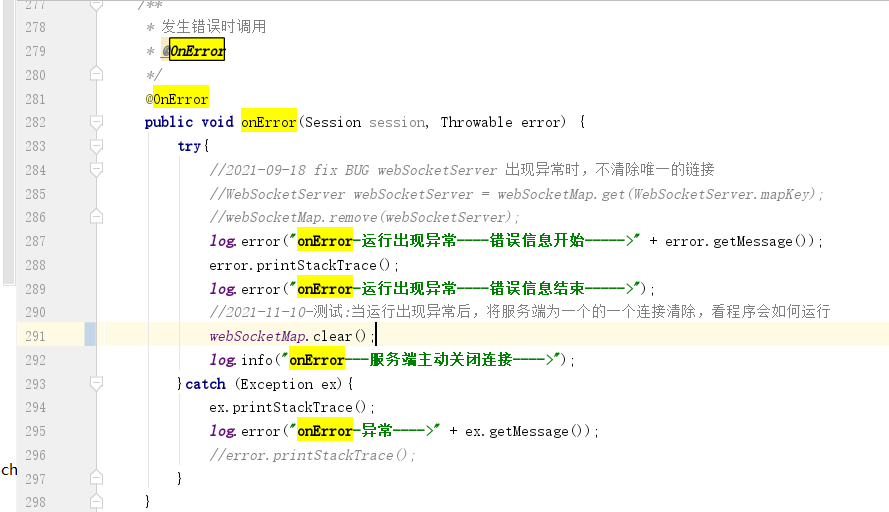
This problem will appear every once in a while and must be solved. If it is not solved, it will certainly affect the normal operation of the project.
3. Solution
After careful analysis of the problem, I tried to solve the problem one by one.
Scheme 1: when there is an error in operation, actively call the method of closing the connection provided in websocket and use this to call.
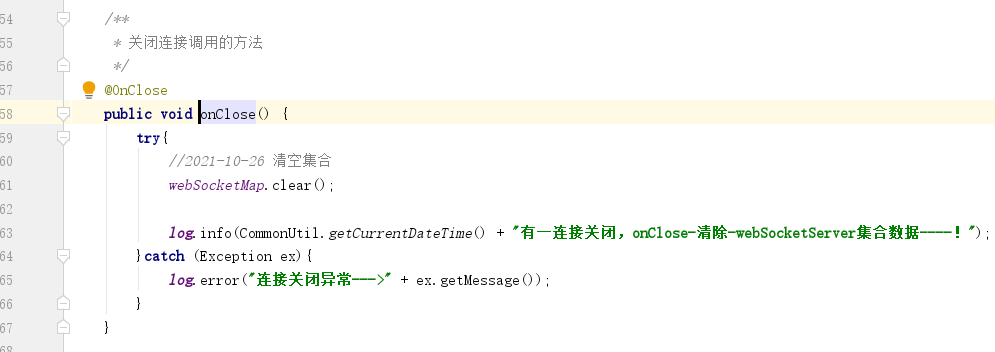
Test results, not resolved.
Scheme 2: in case of running error, actively obtain the unique websockerserver object in the collection, and then use this object to call onclose method and close the current connection
Session.
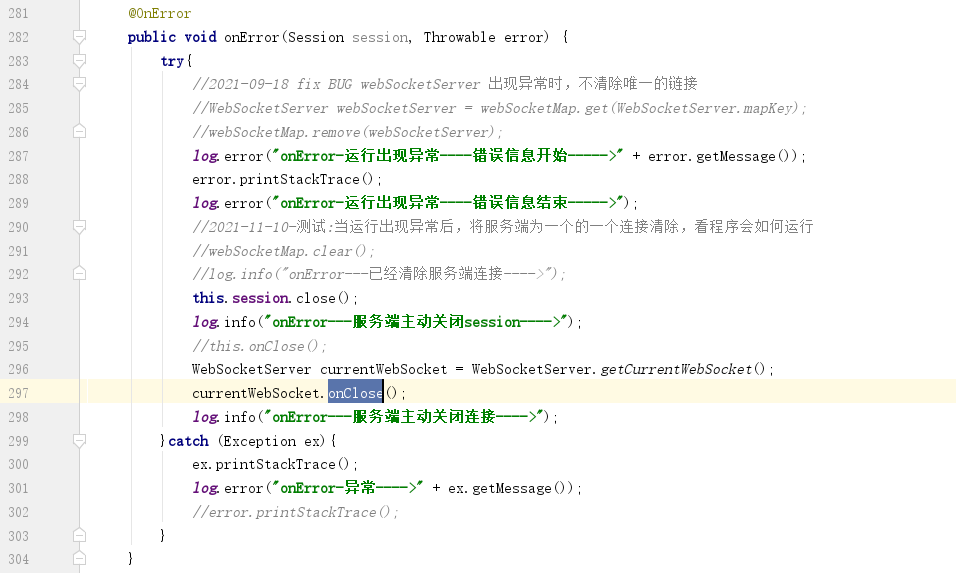
After the code is modified, conduct repeated joint debugging and testing with the client to find and solve the problem. The idea to solve this problem is to take the initiative on the server if the server runs abnormally
Close this connection; After the connection is closed, when the client and server want to communicate again, a new connection will be created to ensure the normal operation of the system.
So far, the problem has been solved, which may be due to the particularity of the project. The project only needs a unique connection, and the problems encountered are easy to solve. To sum up, if
If the server wants to close a connection, it’s best to find the websocket connection first and then close it. In addition, close the current session information. You can’t use the collection to clear it directly,
In combination with direct clearing, the websocketserver is cleared, but the connection session information is still there, so I have that problem.
Solution:
PS: Because I reinstalled ns2, then when I set the environment variables, I repeatedly executed source ~/.bashrc/, but found that the environment variables set did not take effect
Use echo $PATH to check the path, and found that there are duplicate paths
At the command line, enter.
export PATH=$(echo $PATH | tr : "\n"| sort | uniq | tr "\n" :) Remove duplicate path, re-execute ns XXX.tcl file, success!!!
Running environment: Python 3 environment of eclipse under MAC (Note: according to the original text, python 3.9 can also be solved in Python)
/Library/Frameworks/Python.framework/Versions/3.6/lib/python3.6/site-packages/matplotlib/backends/backend_agg.py:211: RuntimeWarning: Glyph 20108 missing from current font.
font.set_text(s, 0.0, flags=flags)
/Library/Frameworks/Python.framework/Versions/3.6/lib/python3.6/site-packages/matplotlib/backends/backend_agg.py:211: RuntimeWarning: Glyph 20803 missing from current font.
font.set_text(s, 0.0, flags=flags)
/Library/Frameworks/Python.framework/Versions/3.6/lib/python3.6/site-packages/matplotlib/backends/backend_agg.py:211: RuntimeWarning: Glyph 39640 missing from current font.
font.set_text(s, 0.0, flags=flags)
/Library/Frameworks/Python.framework/Versions/3.6/lib/python3.6/site-packages/matplotlib/backends/backend_agg.py:211: RuntimeWarning: Glyph 26031 missing from current font.
font.set_text(s, 0.0, flags=flags)
/Library/Frameworks/Python.framework/Versions/3.6/lib/python3.6/site-packages/matplotlib/backends/backend_agg.py:211: RuntimeWarning: Glyph 20998 missing from current font.
font.set_text(s, 0.0, flags=flags)
/Library/Frameworks/Python.framework/Versions/3.6/lib/python3.6/site-packages/matplotlib/backends/backend_agg.py:211: RuntimeWarning: Glyph 24067 missing from current font.
font.set_text(s, 0.0, flags=flags)
/Library/Frameworks/Python.framework/Versions/3.6/lib/python3.6/site-packages/matplotlib/backends/backend_agg.py:211: RuntimeWarning: Glyph 65292 missing from current font.
font.set_text(s, 0.0, flags=flags)
/Library/Frameworks/Python.framework/Versions/3.6/lib/python3.6/site-packages/matplotlib/backends/backend_agg.py:211: RuntimeWarning: Glyph 26679 missing from current font.
font.set_text(s, 0.0, flags=flags)
/Library/Frameworks/Python.framework/Versions/3.6/lib/python3.6/site-packages/matplotlib/backends/backend_agg.py:211: RuntimeWarning: Glyph 26412 missing from current font.
font.set_text(s, 0.0, flags=flags)
/Library/Frameworks/Python.framework/Versions/3.6/lib/python3.6/site-packages/matplotlib/backends/backend_agg.py:211: RuntimeWarning: Glyph 20010 missing from current font.
font.set_text(s, 0.0, flags=flags)
/Library/Frameworks/Python.framework/Versions/3.6/lib/python3.6/site-packages/matplotlib/backends/backend_agg.py:211: RuntimeWarning: Glyph 25968 missing from current font.
font.set_text(s, 0.0, flags=flags)
/Library/Frameworks/Python.framework/Versions/3.6/lib/python3.6/site-packages/matplotlib/backends/backend_agg.py:211: RuntimeWarning: Glyph 65306 missing from current font.
font.set_text(s, 0.0, flags=flags)
/Library/Frameworks/Python.framework/Versions/3.6/lib/python3.6/site-packages/matplotlib/backends/backend_agg.py:180: RuntimeWarning: Glyph 39640 missing from current font.
font.set_text(s, 0, flags=flags)
/Library/Frameworks/Python.framework/Versions/3.6/lib/python3.6/site-packages/matplotlib/backends/backend_agg.py:180: RuntimeWarning: Glyph 26031 missing from current font.
font.set_text(s, 0, flags=flags)
/Library/Frameworks/Python.framework/Versions/3.6/lib/python3.6/site-packages/matplotlib/backends/backend_agg.py:180: RuntimeWarning: Glyph 20998 missing from current font.
font.set_text(s, 0, flags=flags)
/Library/Frameworks/Python.framework/Versions/3.6/lib/python3.6/site-packages/matplotlib/backends/backend_agg.py:180: RuntimeWarning: Glyph 24067 missing from current font.
font.set_text(s, 0, flags=flags)
/Library/Frameworks/Python.framework/Versions/3.6/lib/python3.6/site-packages/matplotlib/backends/backend_agg.py:180: RuntimeWarning: Glyph 65292 missing from current font.
font.set_text(s, 0, flags=flags)
/Library/Frameworks/Python.framework/Versions/3.6/lib/python3.6/site-packages/matplotlib/backends/backend_agg.py:180: RuntimeWarning: Glyph 26679 missing from current font.
font.set_text(s, 0, flags=flags)
/Library/Frameworks/Python.framework/Versions/3.6/lib/python3.6/site-packages/matplotlib/backends/backend_agg.py:180: RuntimeWarning: Glyph 26412 missing from current font.
font.set_text(s, 0, flags=flags)
/Library/Frameworks/Python.framework/Versions/3.6/lib/python3.6/site-packages/matplotlib/backends/backend_agg.py:180: RuntimeWarning: Glyph 20010 missing from current font.
font.set_text(s, 0, flags=flags)
/Library/Frameworks/Python.framework/Versions/3.6/lib/python3.6/site-packages/matplotlib/backends/backend_agg.py:180: RuntimeWarning: Glyph 25968 missing from current font.
font.set_text(s, 0, flags=flags)
/Library/Frameworks/Python.framework/Versions/3.6/lib/python3.6/site-packages/matplotlib/backends/backend_agg.py:180: RuntimeWarning: Glyph 65306 missing from current font.
font.set_text(s, 0, flags=flags)
/Library/Frameworks/Python.framework/Versions/3.6/lib/python3.6/site-packages/matplotlib/backends/backend_agg.py:180: RuntimeWarning: Glyph 20108 missing from current font.
font.set_text(s, 0, flags=flags)
/Library/Frameworks/Python.framework/Versions/3.6/lib/python3.6/site-packages/matplotlib/backends/backend_agg.py:180: RuntimeWarning: Glyph 20803 missing from current font.
font.set_text(s, 0, flags=flags)
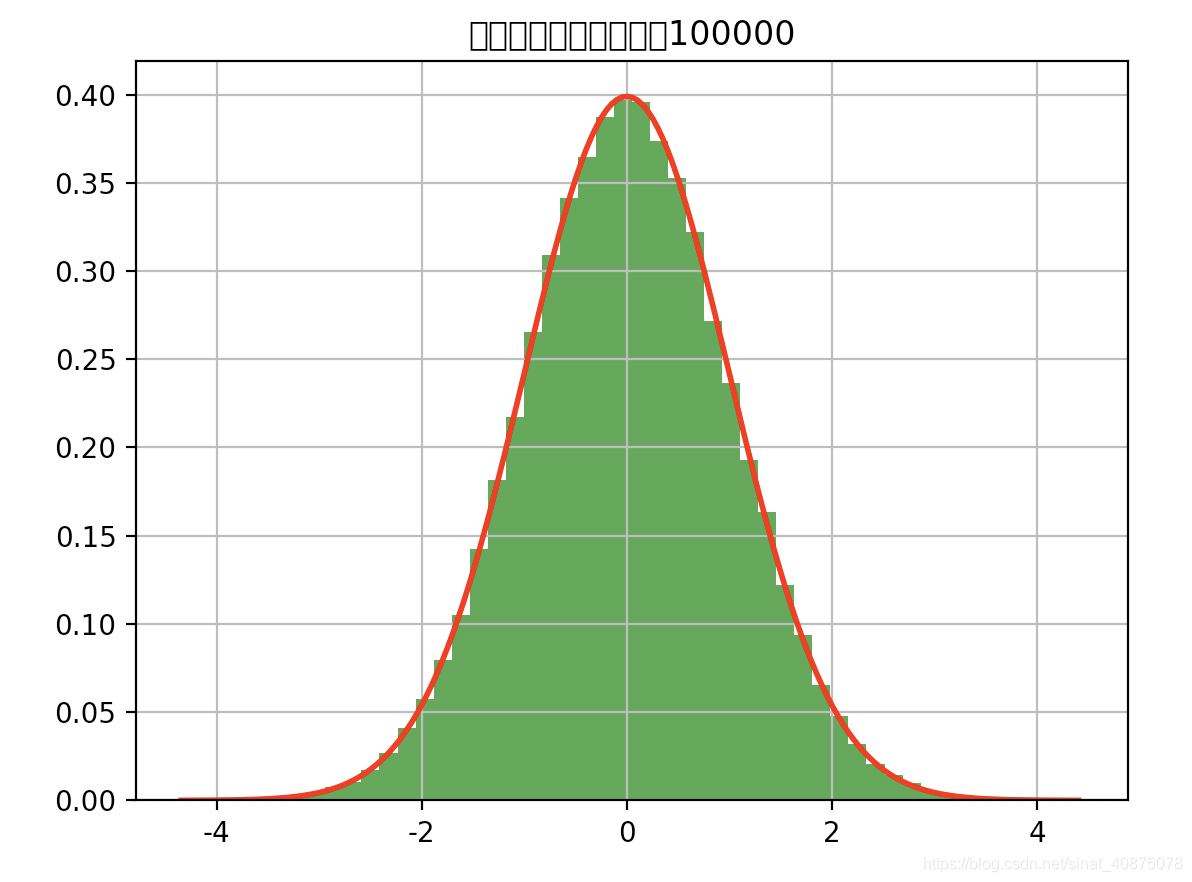
Warning reason: Matplotlib Chinese garbled code
Solution:
1. In the python environment of the terminal, view the font path (the terminal inputs the following command)
import matplotlib
print(matplotlib.matplotlib_fname())

2. Download simhei
Go to the official download website and go to the specified directory: /library/frameworks/python.framework/versions/3.6/lib/python 3.6/site-packages/matplotlib/mpl-data/fonts/ttf, and move the downloaded simhei to this directory.
3. Delete the buffer directory of Matplotlib
In the python environment of the terminal, enter the following command to view the font cache path of Matplotlib:
import matplotlib
matplotlib.get_cachedir()
Then delete the cache using RM - RF + path
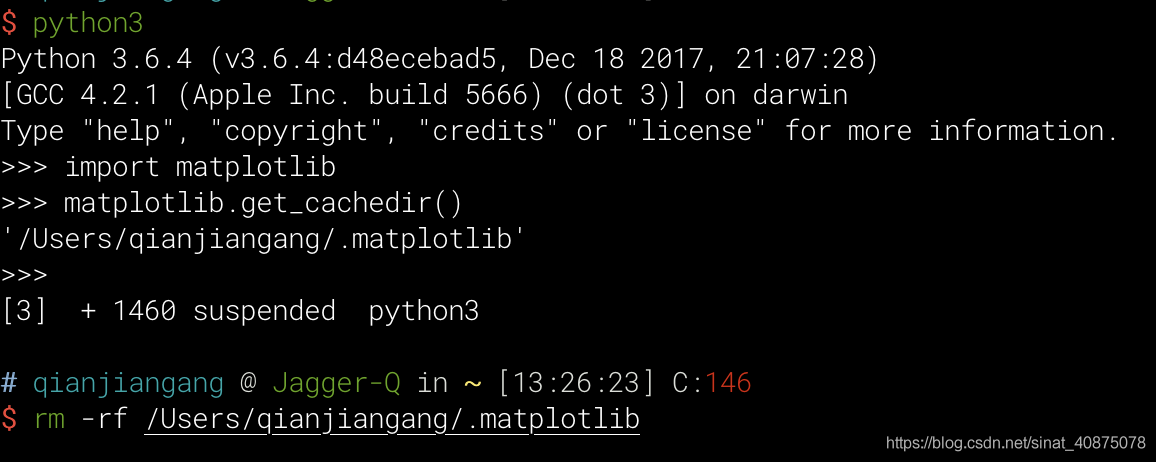
4. Modify the matplotlibrc file
Modify /library/frameworks/python.framework/versions/3.6/lib/python3.6/site-packages/matplotlib/mpl-data/matplotlibrc, as follows:
font.family : sans-serif
# Remove the leading#
font.sans-serif : SimHei, Bitstream Vera Sans, Lucida Grande, Verdana, Geneva, Lucid, Arial, Helvetica, Avant Garde, sans-serif
# Remove the leading # and add SimHei after the colon
axes.unicode_minus : False
# Remove the leading # and change True to False
5. Restart eclipse